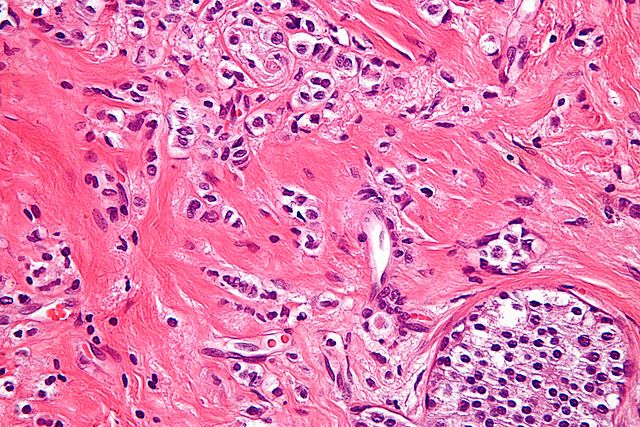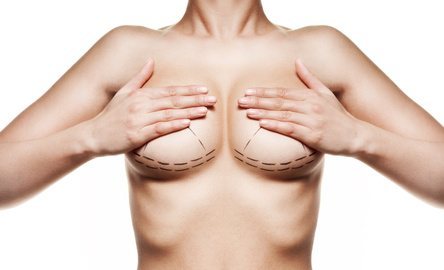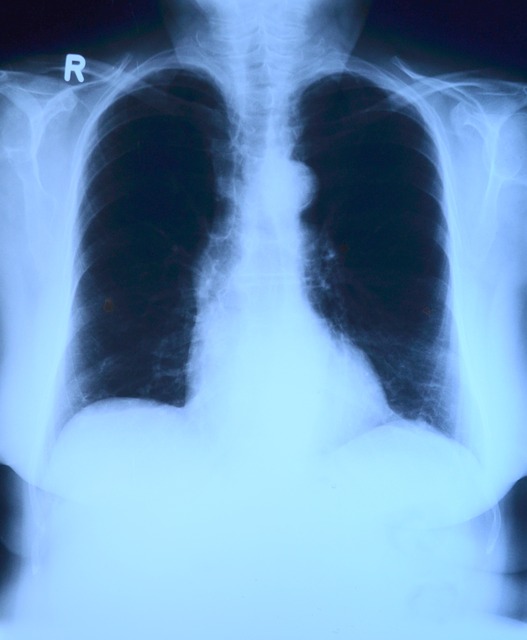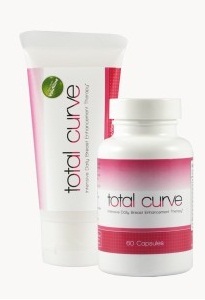Breast cancer. The two words that no woman ever wants to hear her doctor utter, yet it is likely that more than 30,000 women have died from breast cancer. The truth is that all women are looking for answers to questions such as, “How can I avoid breast cancer?” or “Am I susceptible to breast cancer?”
We aim to clear the air when it comes to breast cancer and dense breast tissue. Many women have frequently asked questions about dense breasts. But, before we can answer those questions, it is imperative to spell out the correct information about breast cancer, the risks and the various types of screenings.
The Definition of Breast Cancer
 Breast cancer is defined a type of cancer, meaning a disease that causes the body’s cells to change and grow too rapidly, that begins in the breast tissue. This type of cancer is typically spotted during a screening exam or when a woman feels a lump.
Breast cancer is defined a type of cancer, meaning a disease that causes the body’s cells to change and grow too rapidly, that begins in the breast tissue. This type of cancer is typically spotted during a screening exam or when a woman feels a lump.
Most of these lumps can be benign, meaning they are not cancerous. If, however, experts suspect the lump to be cancerous, then an analysis of the breast tissue will be necessary to reach the correct diagnosis.
Are There Different Diagnoses For Breast Cancer?
To put it simply, yes. There are two different diagnoses that can result from a non-benign lump of the breast.
Ductal Carcinoma In Situ (DCIS)
It is a term used to refer to a large array of abnormal changes in the breast, beginning with the cells that line the breast ducts. DCIS is the noninvasive form of breast cancer since the abnormal cells have not yet grown past the layer of cells where they first began.
DCIS is the most common type of breast cancer, and this form has the ability to morph into the invasive form, but that is not always a guarantee.
Lobular Carcinoma In Situ (LCIS)

Another non-invasive form of in situ breast cancer, Lobular carcinoma in situ, is a more common precursor to the invasive form of cancer.
LCIS is less common than the other in situ we have discussed. However, it is more likely to develop into an invasive cancer. There are other forms of in situ cancer as well, but they are much less common.
More commonly, breast cancers are invasive. These types of cancers have managed to break through the ductal or glandular walls past where they began, and they now surround the breast tissue. Most of the time, time is the major indicator of the prognosis.
If caught early, the right treatment can help to stop or at least prevent the breast cancer from spreading even further. Doctors examine a few different factors of the lump when looking at an invasive form of cancer. They analyze the size of the lump, the amount of spread within the breast, the amount of spread near the lymph nodes, and the amount of metastases.
Am I At A Higher Risk of Developing Breast Cancer?
It is a known fact that there are some factors that put some women at a higher chance of developing cancer. Let’s discuss some of these common factors.
Breast Cancer is Not Just a Feminine Issue
Of course most people associate breasts with women. But, men can actually develop breast cancer, as well. Men are at a much lower risk for developing breast cancer. Nonetheless, it is imperative to note that no gender is excluded from this type of cancer.
Any gender should report any changes in their breasts to a doctor as soon as possible.
The Age Determining Factor
Many people assume that elderly women are at the highest risk of developing breast cancer. Statistics prove that the incidence and death rates do indeed increase with age. Approximately 80 percent of new cases of breast cancer were in women ages 50 and older.
A few years ago, the median age for those afflicted with breast cancer was deemed to be 61 years of age. This means that half of the women with breast cancer were this age or younger at the time of their diagnosis.
According to a recent study, one out of every eight American women will develop breast cancer, as opposed to three decades ago when the numbers showed one in 11. Researchers claim this spike in numbers is due to a longer life expectancy, in addition to the rise in screening.
Menstrual Cycles and Pregnancy
 Another risk factor is present in women who have had more menstrual cycles. This is due to an earlier age of the onset of menstruation. According to some recent studies, women who started menstruating before age 12 and/or women who went through menopause later in life had a higher risk of developing breast cancer.
Another risk factor is present in women who have had more menstrual cycles. This is due to an earlier age of the onset of menstruation. According to some recent studies, women who started menstruating before age 12 and/or women who went through menopause later in life had a higher risk of developing breast cancer.
In addition, women who have had young pregnancies or large numbers of pregnancies have a lower change of developing breast cancer. However, it is significant to note that these pregnancy factors appear to be correlated to hormone receptor-positive breast cancers as opposed to hormone receptor-negative.
Mammographically Dense Breasts
Possessing breasts with high-density tissue has been more of a hot topic in breast cancer research as of late. Researchers and scientists are beginning to link high-density breast tissue to a larger risk factor in the development of breast cancer. It is vital to note that other factors play a role as well, such as menopause, drugs, pregnancy and genetics.
In fact, breast density has become such a hot topic that some states have now made it a legislative measure for doctors to inform their patients if they have a higher density breast compared to the normal numbers. While all states are not yet on board, it is beginning to become prevalent for doctors to look for dense breasts. Here, we will discuss a little more about what it means to have dense breasts.
5 Clear Facts About Dense Breasts
 It’s important to learn more about dense breasts, as they are more common than medical science once thought. Here is some truthful information behind breast density and its correlation to an increased risk of developing breast cancer:
It’s important to learn more about dense breasts, as they are more common than medical science once thought. Here is some truthful information behind breast density and its correlation to an increased risk of developing breast cancer:
Dense Breasts Are Different
Dense breasts are different from regular breasts in that they have less fatty tissue and more non-fatty tissue. One of the most reputable ways to determine breast density is through a mammogram. However, doctors agree to disagree that there are other methods, as well.
You should understand that dense breasts are not different to the touch. You cannot self-diagnose dense breasts. Your breasts might feel more firm or dense to the touch than someone else’s. But, this does not necessarily make them medically dense. In order to diagnose you with dense breasts, a doctor must be able to see within the breast.
Dense Breasts Tend to Cloud an X-Ray
 When doctors perform a mammography, they expect to see a visual of inside the breast. For a woman who is especially prone or susceptible to breast cancer, it is highly essential that doctors be able to see these images. However, the truth is that for a woman with dense breasts, this density can also hide tumors in the X-rays.
When doctors perform a mammography, they expect to see a visual of inside the breast. For a woman who is especially prone or susceptible to breast cancer, it is highly essential that doctors be able to see these images. However, the truth is that for a woman with dense breasts, this density can also hide tumors in the X-rays.
This does not necessarily put women at a higher risk of developing breast cancer. However, it does make it quite possible that their breast cancer may go undetected.
They Are a Gift From Your Mother
Well, not necessarily. However, it is highly likely that your dense breasts are genetic.
Research has proven that dense breasts have more gland tissue, which makes and drains milk in addition to supportive tissue, which encapsulates the gland. Because of these qualities, it has been studied and proven that these are caused by an inheritance. Therefore, if your mother or grandmother tells you that they have dense breasts, then it is highly advisable for you to find out for yourself sooner rather than later.
If You Have Dense Breasts, You Can Still Prevent Breast Cancer
Having dense breasts does not automatically mean that you will have breast cancer. It does mean that you are six times more likely to develop breast cancer. But, there are still preventative measures that you can take to make the chances less likely for you to develop the disease.
For starters, never smoking is a fantastic start. If you are already a chain smoker when you learn that you have dense breasts, then perhaps it is time to kick the butts to the curb.
 Smoking causes myriads of different health concerns, and cancer is only one of them. Stopping smoking will help you feel healthy, in addition to lessening any complications you might experience in the near future. For example, if you do have breast cancer, then smoking can damage the lungs after radiation therapy.
Smoking causes myriads of different health concerns, and cancer is only one of them. Stopping smoking will help you feel healthy, in addition to lessening any complications you might experience in the near future. For example, if you do have breast cancer, then smoking can damage the lungs after radiation therapy.
Smoking can make the healing process much more difficult. And, those who smoke have a higher risk of developing blood clots when taking medications, like hormone replacement therapy drugs.
You Should Have More Screenings
The key to keeping cancer, especially breast cancer, at bay is to consistently keep an eye on it. Dense breasts are a high risk factor. So, anyone with dense breasts should have more frequent mammograms and yearly breast exams. Regular self-exams are also a must.
Statistics show that most cases of breast cancer have a positive outcome with early detection. The diagnosis of a dense breast tissue supersedes any other age recommendations. For example, if your doctor wants to begin mammograms after the age of 30, but you know that you have dense breasts, then you should begin mammograms sooner than that.
 For a woman, her femininity is of the utmost importance. Even a woman who does not fancy herself a girly girl loves her female curves. Whether from a mastectomy or preventative treatment for breast cancer, a woman might want to consider options to increase her curves again in a natural and safe way.
For a woman, her femininity is of the utmost importance. Even a woman who does not fancy herself a girly girl loves her female curves. Whether from a mastectomy or preventative treatment for breast cancer, a woman might want to consider options to increase her curves again in a natural and safe way.
If you are looking for natural, yet effective breast enhancement products that act as a natural breast lift and even enhancement, check companies such as www.TotalCurve.com.
Women who have tried Total Curve gel and supplement boast of an increase in breast size in addition to a noticeable lift in their breasts. Women of the world– let’s stop cancer in its tracks and remain curvaceous and confident at the same time, shall we?
